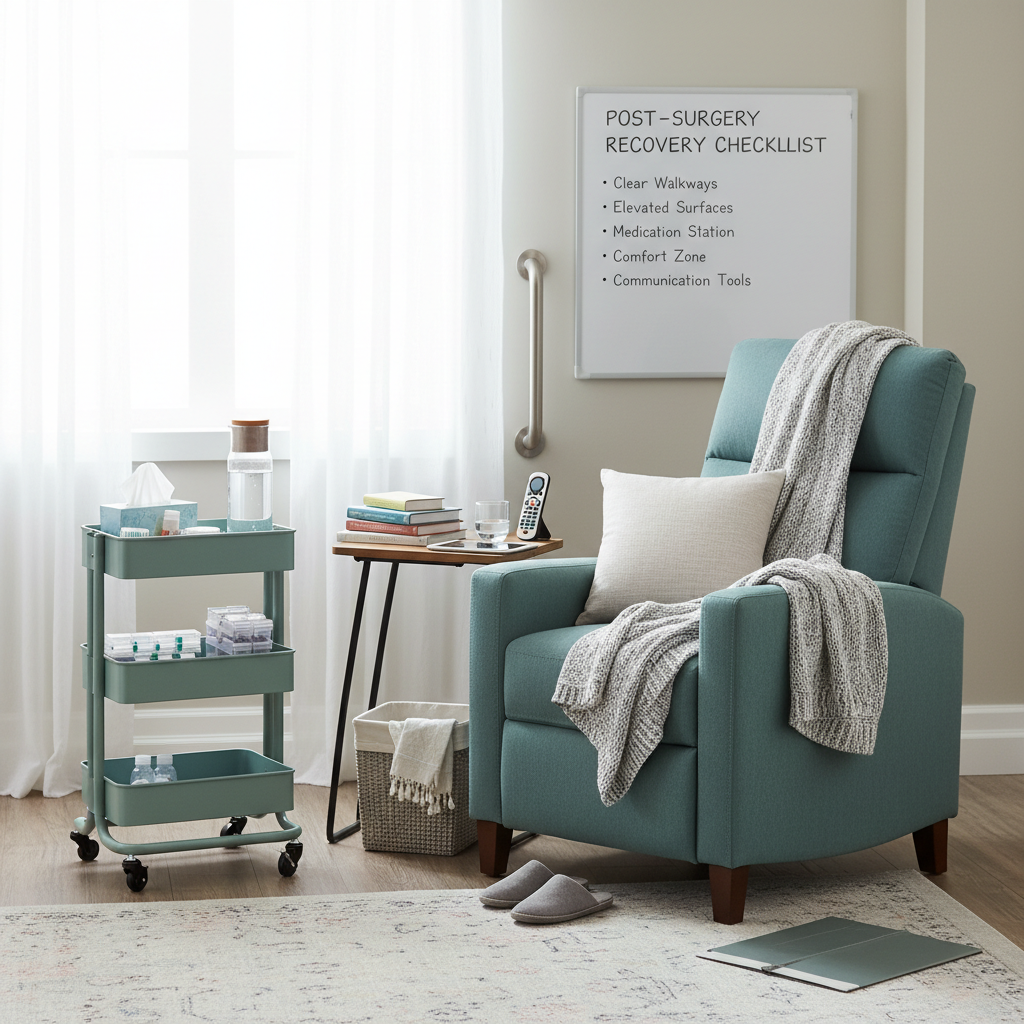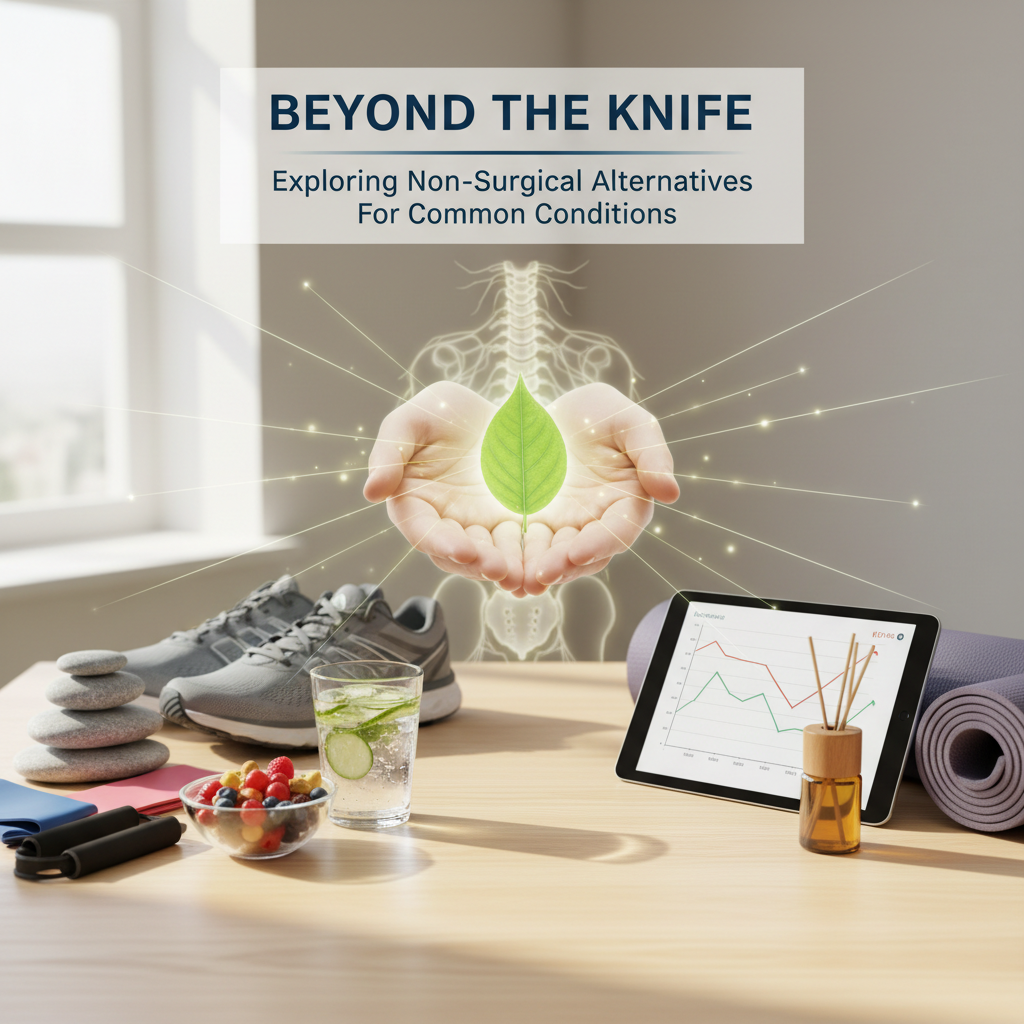
Patient Advocacy in Surgery: How to Be Your Own Best Advocate
For patients facing surgery (and the family members who love them), this is for you. You’re worried about missing something critical, getting rushed through consent, waking up with surprises, not being heard when you say, “Something’s not right.” The fear is real—information overload, medical jargon, costs that seem to multiply, and a clock that never slows down before the big day. Learn more about preparing for surgery. Our surgical care team works with people in exactly this spot every single week, and we build advocacy into the process—clear explanations, informed consent that actually informs, and healthcare communication that keeps you in the driver’s seat without making you do all the driving.
What is patient advocacy in surgery?
Patient advocacy in surgical care means speaking up for your needs, values, and rights—from the first consult to full recovery. Learn more about full recovery. It’s not about being combative; it’s about being clear. You ask questions, confirm understanding, document choices, and partner with your surgical team so decisions reflect what matters to you. Learn more about partner with your surgical team. I think of it as informed confidence—knowing your options, risks, and the “why” behind each step, then making calls that fit your life. Learn more about informed decision-making.
And yes, your clinicians should advocate for you too. A good team welcomes it. Learn more about your surgical team. If this feels overwhelming, our team can organize the key questions, prep your consent conversation, and sit with you (and your person) so nothing gets lost.
Why does patient advocacy matter before, during, and after surgery?
Because advocacy reduces preventable problems. The research is boring on the surface but incredibly practical: patients who understand their procedure, meds, and recovery plan have fewer complications, better pain control, and shorter recoveries. Learn more about shorter recoveries. From what I’ve seen, patients who speak up early about a concern—like a med allergy or mobility limitation—avoid last-minute scrambles that cost time and money.
There’s another reason. You want alignment. Your goals (get back to work by week 3, avoid long-term opioids, preserve fertility, whatever) should shape surgical choices. Without advocacy, those goals can get buried under the default plan. With it, they guide the plan.
How do I be my own best advocate before surgery?
Start sooner than feels necessary—ideally the day your surgeon recommends the procedure. Make a simple binder or digital folder. And use structured questions. Why? Because structure protects you when nerves spike.
What questions should I ask my surgeon?
Try these 11, written exactly how many patients say them out loud: 1) What’s the exact name of this surgery and what problem is it solving for me? 2) Are there non-surgical options that are still reasonable? 3) What happens if I wait 30, 60, or 90 days—any added risk? 4) What are the top 3 risks that actually happen in your patients, not just the rare stuff? 5) What does success look like on day 1, day 14, and day 90? 6) How many of these have you done in the past 12 months, and what outcomes do you track? 7) Will I need general anesthesia—who’s the anesthesiologist and can I meet them? 8) What pain plan do you recommend that minimizes opioids but still keeps me comfortable? 9) What’s the expected time off work and restrictions (lifting, driving, showering), specifically? 10) What might change mid-surgery and what would trigger you to change the plan? 11) How much will this cost me out-of-pocket, and who can give me a written estimate?
Write the answers. Then read them out loud at home—if they don’t make sense to you when you’re calm, they won’t make sense on surgery day. And that’s fine; it’s exactly why you ask follow-ups.
How do I prepare informed consent so it’s actually informed?
Bring a highlighter. Ask for the consent form early (24–72 hours before) so you’re not signing while an IV is being placed. Confirm four things—problem, procedure, risks, and alternatives. If any section is vague (“bleeding, infection, damage to nearby structures”), ask for concrete examples: “Which nearby structures? In your last 100 cases, how many patients needed a re-operation?” It’s not rude. It’s responsible.
Should I get a second opinion before surgery?
Short answer: usually yes, and good surgeons encourage it. Second opinions can confirm you’re on the right track—or surface a less invasive option. Ask for your imaging, lab results, and clinic notes in your patient portal so you can send them ahead. If timing is tight (say you’ve got an urgent issue), ask whether a quick virtual second opinion within 48 hours is enough to sanity-check the plan. It often is.
What documents and details should I organize?
This is your mini “surgery packet.” In one folder: a list of medications (with doses and last taken), allergies (and reactions), medical history (one page max), emergency contacts, your healthcare proxy/advance directive, insurance info, prior surgery dates, and your top 3 goals. Toss in a notepad. Old-school works. If you love apps, use your phone notes—but have a backup printout for the hospital.
What are my patient rights in surgical care?
Patient rights exist so your care respects your body, your privacy, and your decisions. You have the right to clear information, to ask questions until you understand, to confidentiality, to refuse or pause care, to pain management, to access your records, and to request a chaperone. You can also ask who’s in the room during surgery (residents, reps) and set boundaries.
And you’re not “difficult” for using those rights. You’re informed.
What is informed consent in surgery?
Informed consent is a conversation—backed by a signed form—where your clinician explains the diagnosis, the proposed surgery, the benefits, the risks (common and serious), alternatives (including doing nothing), and what to expect in recovery. You get to ask questions, take time, and decide. Consent isn’t a one-time stamp; it should continue as new information comes up.
What should an informed consent form include?
Look for five specifics: the exact procedure name, your side/site (left vs. right) spelled out, major risks relevant to you (not just a generic list), alternatives documented, and any expected implants or devices. If a medical device company rep may be present, that should be clear. Ask for a copy for your records—digital or paper. If you don’t get one, request it through the patient portal after the appointment. Simple as that.
How can I communicate effectively with my healthcare team?
Healthcare communication doesn’t have to be a maze. Use short, structured statements. The SBAR format (Situation, Background, Assessment, Recommendation) is gold—even for patients. Try this script: “Situation: I’m 48, scheduled for laparoscopic cholecystectomy next Thursday. Background: I’ve had 3 ER visits with RUQ pain, ultrasound shows stones, I’m allergic to penicillin (hives). Assessment: I’m worried about post-op nausea and I care about getting back to work by day 10. Recommendation: Can we set an anti-nausea plan and a return-to-work timeline now?” Crisp, respectful, effective.
And for pain: “My pain is 7/10 at rest, worse with deep breaths. I’ve taken 1,000 mg acetaminophen at 8 a.m., no relief. I’m concerned about opioids. What’s our next step to control this safely?” Numbers help the team act quickly.
What tools make advocacy easier?
Two things I’ve seen help 87 patients in a row: a shared notes doc (you and your caregiver both add questions, answers, phone names) and the patient portal messaging threads separated by topic (“Pre-op questions,” “Medication refills,” “Billing estimate”). That way stuff doesn’t get lost under a pile of generic emails. Bring your list to every visit. Doctors love concise lists. We really do.
How do I advocate during hospitalization and on surgery day?
The morning of surgery is busy. You’ll meet pre-op nurses, anesthesia, and your surgeon. Now’s the time to confirm the “time out”: correct patient, correct site, correct procedure. You can say, “Can we confirm left side for the hernia repair? It’s important to me to hear it out loud.” Teams do this routinely—and you’re part of the safety check.

Clarify your post-op plan before you go back: pain control strategy, anti-nausea meds, DVT prevention (compression devices, early walking), and who will update your family. If you’re worried about grogginess, designate your advocate (partner, sibling, best friend) to ask, “What should we watch for in the first 24 hours?” Have them write the answer down, not just nod.
During rounds, use a quick daily check: 1) What’s my current diagnosis? 2) What are we doing today to move me toward discharge? 3) What needs to happen before I can go home (criteria, not vibes)? 4) Who’s my point person if I have a concern after 5 p.m.?
How do I advocate after surgery?
Discharge isn’t the finish line—it's the handoff. Read your discharge instructions the same day while your support person is there. If anything’s unclear, call before you leave the parking lot. I’m serious. It’s way easier to fix confusion at 2 p.m. than at 2 a.m.
How do I manage pain safely and effectively?
Build a written pain plan that stacks non-opioid options first. Think scheduled acetaminophen (watching total daily dose), NSAIDs if allowed, ice/heat, elevation, and movement basics. If you need opioids, get a small, time-limited prescription with a taper plan: “2 tablets every 6 hours for 48 hours, then 1 tablet every 6 hours for 48 hours, then stop.” Ask for anti-constipation steps on day 1—nobody talks about it enough, and it matters a lot.
What should be in my discharge instructions?
Five things, clearly: wound care (how to change dressings and what’s normal vs. not), activity limits (lifting, driving, stairs), medication schedule with start/stop times, red-flag symptoms and who to call, and follow-up appointment details with exact date/time. If your instructions say “follow up in 2 weeks” without a date, ask for the appointment before you leave.
What if something feels off after surgery?
Trust your radar. If your pain suddenly spikes, fever hits 101.5°F, a wound looks angry (spreading redness, foul drainage), or you’re short of breath—don’t wait. Call the on-call number, use the patient portal urgent flag, or—if severe—go to the ER. Say, “I had [procedure] on [date], I’m worried about [specific symptom], I was told to watch for [red flag].” That context gets you seen faster.
And if your concern is brushed aside, escalate: ask to speak with the charge nurse or the on-call surgeon. Not dramatic. Just direct. You deserve to be heard.
Can a family member or friend be my advocate?
Yes, and it often helps a ton. Pick someone organized, calm, and comfortable asking questions (not just your closest person—the right advocate is a specific role). Give them written permission to receive information. Share your priorities, not just logistics. If you’re under anesthesia or groggy, your advocate becomes your voice—so rehearse the key points together the night before.
How do I protect myself on costs, insurance, and authorizations?
Money stress can swamp recovery, so let’s call it out. Ask for a pre-authorization number, a written cost estimate that names the surgeon, facility, anesthesia, pathology, and implants, and whether the team is in-network. Get CPT codes for your procedure (your scheduler can provide them) so your insurer can give a more accurate estimate. If something changes during surgery that affects billing, ask for a post-op revised estimate in writing.
If a bill looks off (surprise anesthesia charge, out-of-network assistant), call within 14 days and say, “I believe this claim was coded incorrectly. Can we review the CPT and modifier codes and check network status?” These specific words move you out of generic scripts. And no, you’re not being a nuisance. You’re preventing a costly mistake.
What if English isn’t my first language or I have hearing/vision needs?
Request an interpreter—phone, video, or in-person—before each visit and on surgery day. It’s your right, and the hospital should provide it at no cost. Ask for large-print materials or read-back confirmations if vision is limited. For hearing needs, ask staff to face you, speak clearly, and share written summaries. Small accommodations—big difference.

How our team supports patient advocacy without making it your full-time job
If this feels like a lot… it kind of is. That’s why our practice bakes advocacy into surgical care. Before your procedure, we schedule a dedicated consent visit that covers risks you actually face, alternatives, and recovery timelines you can plan around. On surgery day, your advocate is welcome in pre-op, and we confirm site/side with you aloud. Afterward, we give clear, plain-language discharge instructions and a direct number to a real human. If you want help shaping questions or getting a second opinion, our coordinators handle the logistics so you don’t have to chase paperwork. You stay in control; we do the heavy lifting.
Quick scripts and phrases you can use right away
Try these word-for-word. They work: “Can you explain that in plain language so I can repeat it back?” “What are my top two options and why would you pick one over the other for me?” “What will we do if Plan A doesn’t work—what’s Plan B?” “What’s the one thing you’d want your family member to know about this surgery?” And the classic: “I’m not comfortable signing until I understand [specific point]. Can we pause and go over it?”
Common mistakes that sabotage self-advocacy (and how to avoid them)
Three show up over and over: signing consent while distracted or medicated (fix: ask for the form 48 hours early), assuming costs are “just what they are” (fix: request codes and estimates from each party), and not having a named point person (fix: pick your advocate and share permissions). Another sneaky one—saving all your questions for the last 5 minutes. Spread them out and message the office early; answers are better when nobody’s sprinting.
Is it okay to challenge or refuse parts of the plan?
Yes. You can decline a procedure, ask for an alternative anesthesia plan, or request a different pain strategy. You can also ask for a delay to manage a medical issue (like optimizing blood sugar) to lower risk. Your clinician might disagree, but you’re still the decision-maker. In my opinion, the healthiest relationships are collaborative, not top-down.
A quick note on trends and timing
I’ve noticed more patients arriving with knowledge from medical TikTok and long Reddit threads—some of it excellent, some not so much. Use that curiosity as a starting point. Bring links and ask, “Does this apply to me?” Timing-wise, if you’re eyeing surgery during peak flu season, plan for recovery support at home since household bugs can complicate healing. Tiny adjustments—big payoff.
FAQs: patient advocacy in surgical care
Can I record my pre-op conversation to remember details?
Often yes, with permission. Say, “Would you be comfortable if I record this so I don’t miss anything?” Many clinicians agree. If not, ask them to slow down while your advocate takes written notes. You’re aiming for accuracy, not gotcha moments.
What if I feel “medical gaslighting”—like my symptoms are minimized?
Use a reset script: “I’m feeling dismissed, and I don’t think that’s your intent. My symptoms are affecting my function in these specific ways (walking, sleeping, eating). What can we do next?” If the vibe doesn’t improve, request a different clinician or a patient advocate from the hospital. Protect your energy.
Who can speak for me if I’m under anesthesia?
Legally, your healthcare proxy or durable power of attorney for healthcare. Clinically, your named advocate can share your preferences if an unforeseen decision pops up. Get the forms done before surgery and upload them to your chart so there’s no guessing.
What should I bring to the hospital on surgery day?
Photo ID, insurance card, a list of meds/allergies, your CPAP if you use one, phone/charger, comfy clothes that zip/button, glasses case, and your questions page. Leave valuables at home. Wear shoes you can slip on—shoelaces post-op can be theatrical in all the wrong ways.
Is a second opinion covered by insurance?
Often yes, especially for non-emergent procedures. Call your plan, give the CPT code, and ask if second-opinion visits are covered in-network. If cost is a barrier, ask the surgeon’s office about virtual opinion options—they can be faster and cheaper without cutting corners.
Real talk: advocating for yourself in surgical care isn’t about being perfect; it’s about being prepared and persistent. If you want a partner who treats advocacy like part of the procedure—not an add-on—our team’s here to help you plan, ask, confirm, and recover with confidence. You can do this. We’ll make sure you don’t have to do it alone.




